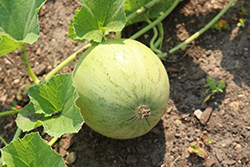Fri & Sat 8am - 8pm
Sun 8am - 7pm
Anytown, USA 12345
fax: 261.787.0463
e-mail: info@successgc.com


Plant Finder

Divergent Cantaloupe
Cucumis melo var. cantalupensis 'Divergent'
Height: 18 inches
Spacing: 3 feet
Sunlight:
![]()
Hardiness Zone: (annual)
Description:
An early maturing and vigorous variety, perfect for home and market gardens; round, 4lbs heavily netted fruit reveals bright orange-salmon colored flesh; sweet and aromatic, a perfect summertime snack; excellent disease resistance
Edible Qualities
Divergent Cantaloupe is an annual vegetable plant that is typically grown for its edible qualities. It produces tan oval melons (which are technically 'berries') with salmon flesh which are typically harvested when mature. The melons have a sweet taste with a firm texture and a distinctive fragrance.
The melons are most often used in the following ways:
- Fresh Eating
- Eating When Cooked/Prepared
- Juice-Making
- Freezing
Planting & Growing
Divergent Cantaloupe will grow to be about 18 inches tall at maturity, with a spread of 6 feet. When planted in rows, individual plants should be spaced approximately 3 feet apart. Because of its vigorous growth habit, it may require staking or supplemental support. This vegetable plant is an annual, which means that it will grow for one season in your garden and then die after producing a crop.
This plant is typically grown in a designated vegetable garden. It should only be grown in full sunlight. It does best in average to evenly moist conditions, but will not tolerate standing water. This plant is a heavy feeder that requires frequent fertilizing throughout the growing season to perform at its best. It is not particular as to soil type or pH. It is somewhat tolerant of urban pollution. Consider applying a thick mulch around the root zone over the growing season to conserve soil moisture. This is a selected variety of a species not originally from North America.
